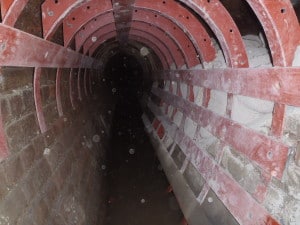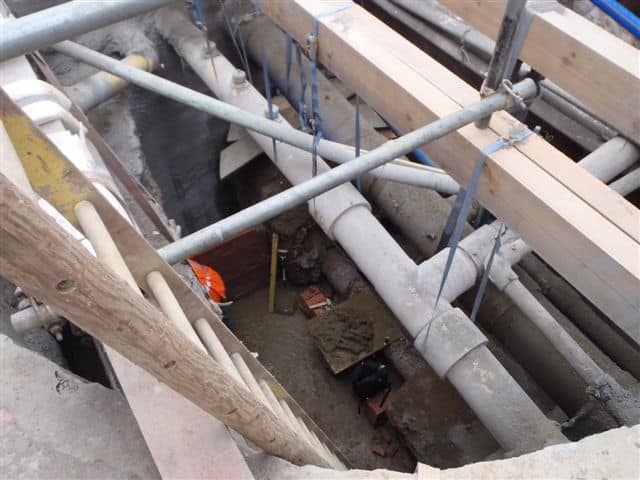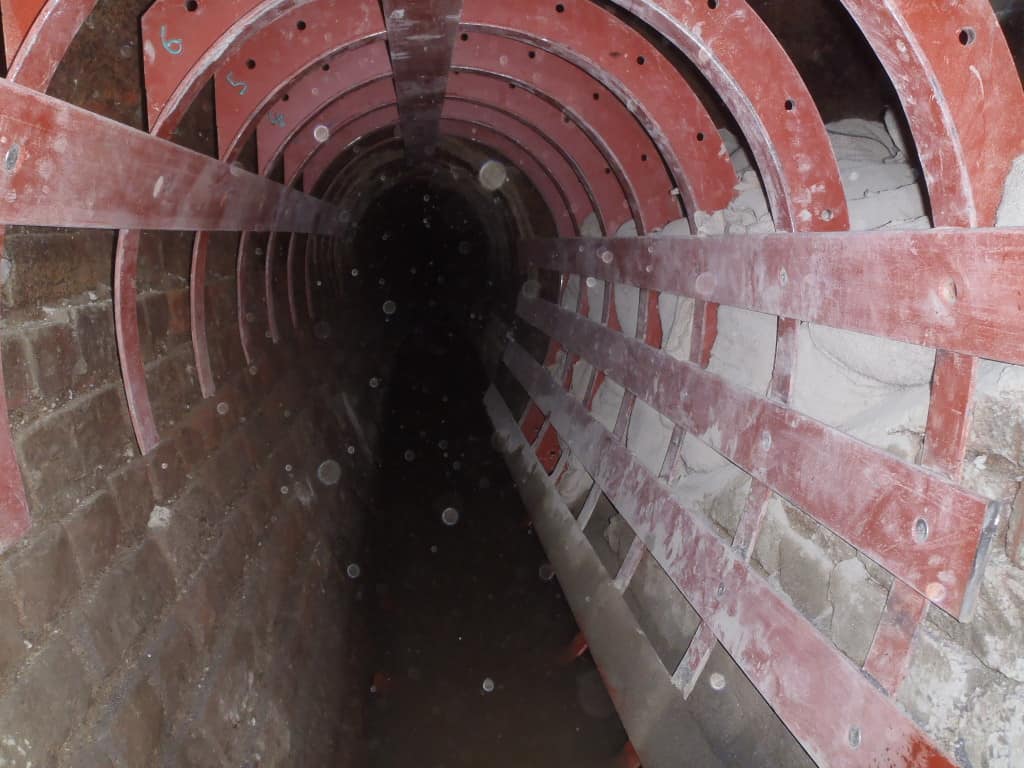Project: Sewer protection
Customer: Thames Water
Sector: Utilities
Location: Mayfair, Central London
The challenge
We were commissioned to install two pipe liners to strengthen a sewer so it was protected from potential movements caused by tunnelling under Davies Street, Mayfair, for Crossrail, the new east-west rail line though London.
The design and shape of the sewer, plus access limitations, presented two main challenges:
- Making sure the liners were moved into the right place within a complex sewer
- Ensuring the liners were moulded to the shape of the sewer, and adhered to its walls, as the resin in the liner cured, or hardened.
The solution
UKDN Waterflow (LG) devised two sewer rehabilitation innovations to manage these issues.
Guide flume
The shaft through which the liners would be delivered to the right location in the sewer was criss-crossed by multiple services. This risked making it difficult to send the liner down the correct path. The solution was to create a guide flume from the shaft entrance into the sewer. This ensured the liner could be directed with certainty to the right location.
Steel inflation cage
An unusually-large four metre opening allowed a lateral branch to flow into the egg-shaped sewer. This created a risk of the liner not taking the shape of the sewer when a rubber packer was inflated insider it. The solution was to create specially-made steel inflation cage which forced the liner against the sewer walls during the curing process.
Customer comment
“The Davies Street works formed one of the largest sewer lining projects for Thames Water as part of Crossrail. The project was a time sensitive, technically challenging job and the team at UKDN Waterflow (LG) came up with an innovative delivery solution that met that challenge.”
Raj Kumar, Contracts Manager, Skanska for Thames Water
Implementation
A team of 32 UKDN Waterflow (LG) drainage and sewer rehabilitation engineers worked on the project. Water flow through the sewer had to be halted during the work. The team worked around the clock. This was because was under one of the busiest parts of London, and normal sewer capacity had to be restored as quickly as possible. The sewer could be fully restored after just 20 hours.
Fifteen lateral connections re-instated after works completed.
Ultra violet lining
We selected a technical called ultra violet (UV) cure in place pipeline (CIPP) lining to strengthen the sewer. Glass fibre liners impregnated with UV light-sensitive resin were placed in the sewer, then forced against the inner sewer walls. A UV light array was then passed through the liner, which activated the resin, hardening it.
UV lining can be carried out more easily in confined areas. It needs less equipment, and can be completed more quickly, largely because the curing process is faster. It also creates no toxic water waste, unlike the conventional lining technical, hot water CIPP, so is more sustainable.
Project management
On time delivery – Clear targets from Crossrail for the minimisation of disruption and a strict 48-hour start-to-finish timeframe. Exceptional planning and on-site practises meant the job was delivered on time.
Cost control – A fixed cost was established at the outset and UKDN Waterflow (LG) delivered within this budget, with near-zero wastage and no snagging problems.
Team working – Our teams worked closely with Skanska, Thames Water and Crossrail, through a programmed planned hour-by-hour programme, with key milestones agreed and implemented.
Environmental management
Minimising disruption to businesses and residents in the immediate vicinity was a critical priority. A host of measures included:
- Noise and dust level monitoring
- Super-silenced generators and acoustic blankets
- Traffic marshalling
- Maintenance of pedestrian access throughout the project.
Results
The project was successfully completed within the tight timescales and on budget. There was minimal waste, no excavation, and a short duration of works which resulted very little impact on stakeholders, primarily residents, businesses and the wider public.



